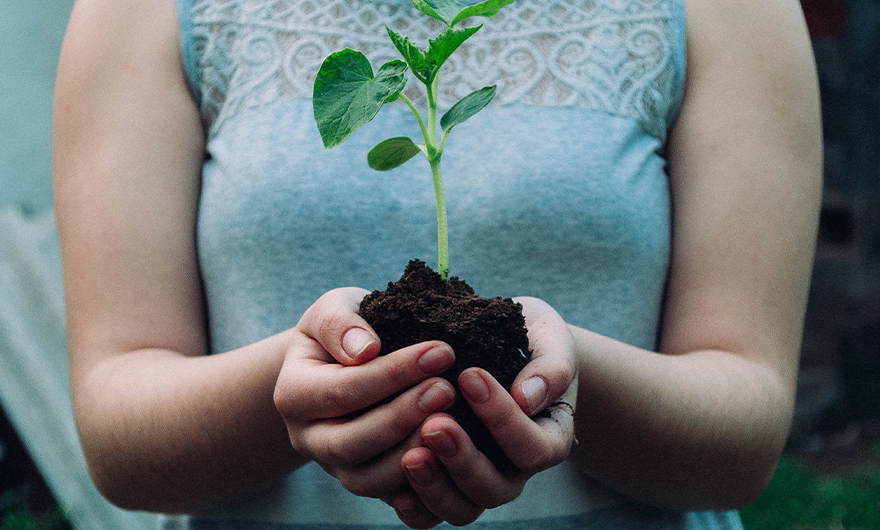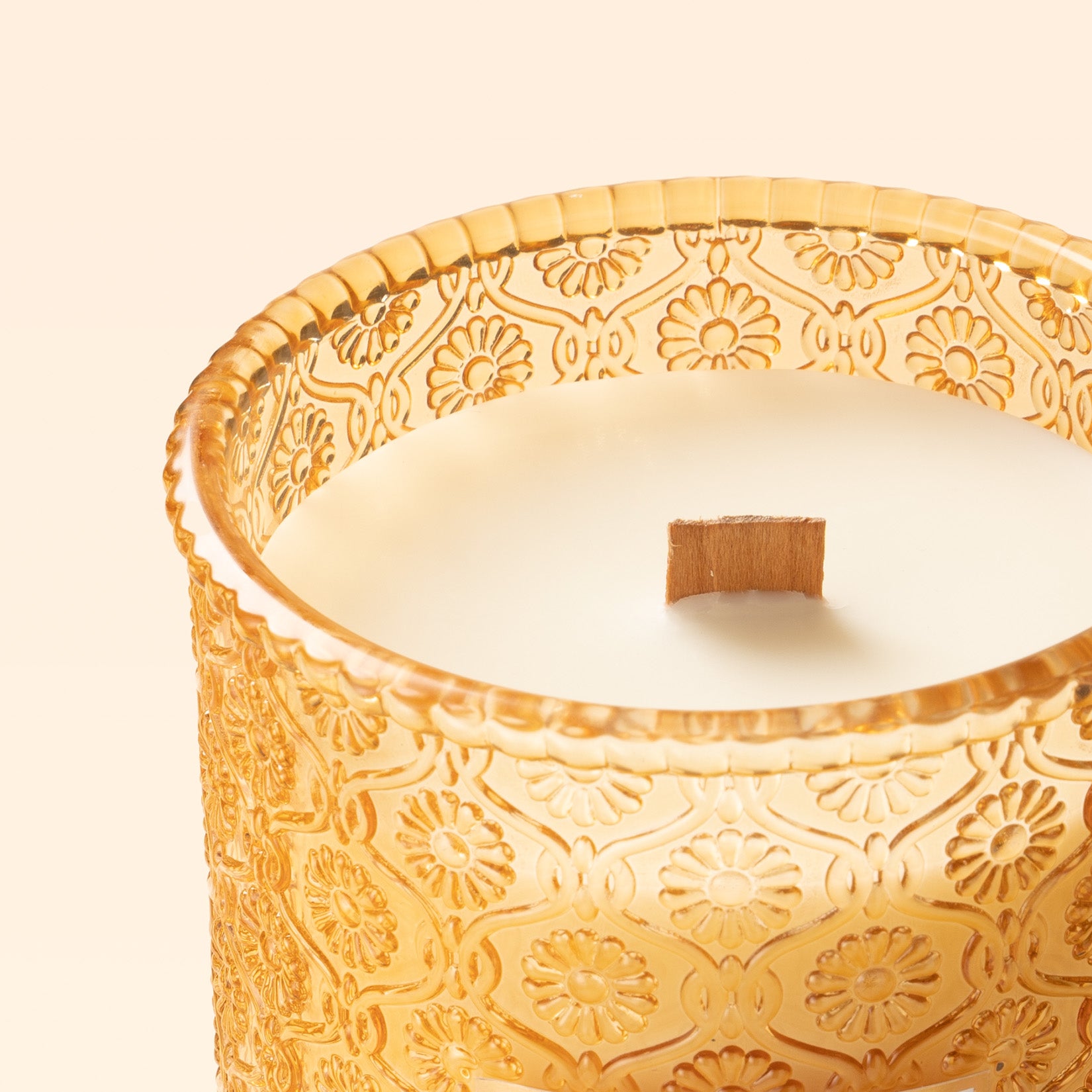Why Grow Herbs?

Herbs are some of the easiest (and most useful) plants to grow inside. A DIY herb garden is cheap to start and—if done right—can be propagated to create more plants for almost endless herbs! Even if you grow them from seeds, with the right technique you’ll only need to learn how to germinate seeds once.
As well as being very affordable, growing your own culinary herbs or starting your own spice garden saves you from overbuying and wasting produce.
Where To Grow Herbs
Before we start fantasizing about a hanging herb garden or buying the perfect herb garden planter, let’s talk sunlight.
Fact: There are a lot of plants that don’t need sunlight, but herbs aren’t really one of them. Do herbs need full sun? Mostly, yes, at least 6 hours a day at 65-75℉ (18-24℃).
Don’t despair if you don’t live somewhere sunny—your windowsill herb garden dreams can be achieved with a grow light. All plants need a period of darkness, so don’t run them all day. You can plug your lights into a timer that switches them off automatically.
Tools Of The Trade

The best indoor herb garden only needs simple tools. Here’s what you need to get started:
- Herb seeds, cuttings, or plants (read on to see which one suits you)
- Clean garden shears/scissors
- Multi-purpose soil
- Perlite (optional)
- Pots with drainage holes
- Growing lights (optional, depending on your growing environment)
- A heat mat (optional, depending on your growing environment)
Seeds, Plants, Or Cuttings?

Soil
Thankfully, regular, multi-purpose gardening soil works just fine, as long as it has good drainage. You can add some perlite (made from volcanic rock) to create spaces in the soil, which increases drainage and helps the soil “breathe.”
Seeds
How to start seeds indoors? The easiest way is to start sowing seeds is to follow the instructions on the seed packet (indoor herb garden kits can be a good option) because some seeds take longer than others to germinate. You’ll also want to pay attention to how deep to plant them or if they need to be scattered and misted with water.
For most herbs, an indoor temperature of 75℉ (23℃) is good for germination. If your space is cool, you can use a heat mat to help them germinate.
Plants
While this may seem the fastest way to solve the “how to grow herbs indoor” question, there are steps you’ll need to take to keep them healthy! If you go with this option, make sure you choose plants that are not:
- Discolored
- Wilted
- Have broken or damaged stems
- Are overgrown with tangled stems
You’ll also need to repot your plants because most grocery store plants are root bound. This means that the overgrown roots have started growing in circles looking for more space and nutrients.
How to Split Overgrown Plants

Before repotting your plants, check to see how many stems your plant has. Most herb plants are multi-sown, meaning that multiple seeds are grown in the small nursery pot. This overcrowding won’t help with your plant's health, so consider splitting the plant (by gently pulling apart the root mass) in two. If the root masses have a lot of roots intact and are quite large, you can split them again into four plants.
To repot, find pots with good drainage that are twice as big as the grocery store nursery pot and add with fresh potting mix. Water them thoroughly, and make sure they don’t dry out between waterings.
How To Propagate Cuttings

Whether you’re taking a cutting from a friend’s plant or saving a leftover grocery store herb, the technique to getting a healthy cutting is the same for most herbs.
- Prune your plant and make sure the cutting is between 2-6 inches long.
- Clip off the lower leaves and clean off the stem, leaving the leaves at the top.
- Place the cutting in a cup of water (make sure the water is covering the stem halfway) and make sure it sits somewhere warm with at least 6 hours of sunlight a day.
- After 7-10 days, you should see some tiny roots emerging.
- After 2 weeks, you should see more roots developing.
- After 3 weeks, the roots system should have a thriving roots system.
- Take your cutting out of the water (separate multiple cuttings) and plant them in soil.
- Water thoroughly, and make sure the soil doesn’t dry out between waterings.
The Best Herbs To Grow Indoors

Answer: the ones that you need! Whether you’re planting mint, lemon balm, Mediterranean herbs, or even protection herbs, they’re all fair game.
Herbs are easy plants to grow inside, but the most important thing is that you give them enough sun, water, the right humidity, and temperature. Countertop herb garden or a window herb garden—just choose your plant and get digging.
Basil

For pesto, salads, sauces, and many other Italian dishes, basil is a must! Basil is a true sun lover and sensitive to cold, so don’t let it dip below 55℉ (13℃) with help from a grow lamp or a sunny window. It also needs proper drainage (overmoist roots will rot) so make sure to water only once or twice a week, depending on how dry the soil is.
Basil is an annual plant, so it tends to live only one year, but with the right care, can live up to two.
Sage

Not just for cleansing your house, but delicious in poultry dishes, stuffing, classic brown butter sauce, and pairs well with meats, cheeses, and bread. Sage is another sun lover and needs to be replaced every few years. It’s also quite drought tolerant, so make sure to wait between waterings before thoroughly watering.
Mint

Mint grows and spreads fast, making it the perfect indoor herb. Mint likes the sun, but it’s one of the herbs that grow in shade too. Make sure to grow it in its own pot, otherwise, it’ll take over other herbs. It’s also a thirsty plant, so frequent watering is recommended. If you see flowers growing, make sure to snip those off so your plant keeps producing new leaves.
For a superior mint sauce, extra flavorful hot chocolate, and a fresh key ingredient for a number of other tasty desserts, mint is a fantastic (and enthusiastic) herb to have.
Chives

Fresh, crunchy, and happy in full sun or partial shade, chives prefer moist soil compared to other herbs. When harvesting, cut two inches above the base to encourage growth.
Cilantro

Love it or hate it, it’s the zesty key to the best salsa, guacamole, widely used in Mexican and Mediterranean cuisine.
Cilantro likes full sun and can also grow in shade and only lives a year, however, it does reseed itself well. Let your plants flower and go to seed, and they’ll reseed themselves. To harvest, pick off leaves or cut off small stems.
Thyme

A classic herb every kitchen needs. Thyme is extremely versatile and grows nicely in a single pot for a bunched effect. While thyme absolutely needs sun (and will die quickly without it), it can survive freezing temperatures, grow in shady areas, and requires good drainage. Without adequate sun, you’ll notice the leaves turning brown or yellow.
Parsley

Another great indoor herb! Parsley can grow in cooler temperatures and can live with more moisture than most. It’s also really easy to grow from seeds—just make sure to soak the seeds in water overnight to get the seeds to sprout faster.
Rosemary

Beautiful and fragrant, rosemary adds complex flavor when roasted with vegetables or meat. Rosemary enjoys the sun, well-drained soil, and extracts moisture from the air, so won’t need to water as often.
Dill

With delicate feathery leaves and a taste that pairs well with mustard or creamy sauces, dill grows well in full sun or partial shade. Dill doesn’t need much watering either, so a quick check of the soil should tell you if it needs a drink.
Oregano

Hardy, drought-tolerant, and sun-loving, oregano is a great beginner herb. Requiring water only when the soil dries out, oregano is a short-lived perennial, so should be replaced every two years.
Now that you’re all caught up on why, how, and what herbs to plant, it’s time to start the fun stuff—gathering your tools, finding the right spot, and investing in some beautiful pots for your upcoming harvest. Herbs only need drainage, so a big, beautiful minimalist set, a family of adorable animals, or even hanging planters are all great options!















Leave a comment